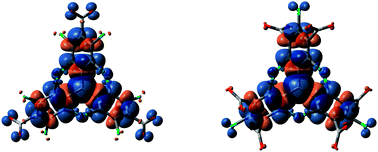Polychlorinated trityl radicals for dynamic nuclear polarization: the role of chlorine nuclei
Abstract
Polychlorinated

- This article is part of the themed collection: High field dynamic nuclear polarization – The renaissance
* Corresponding authors
a
Institute for Research in Biomedicine, Parc Científic de Barcelona, Baldiri Reixac, 10-12 08028-Barcelona, Spain
E-mail:
mpons@ub.edu
Fax: +34934039976
Tel: +34934034683
b Universitat de Barcelona, Martí i Franquès 1-11 08028 Barcelona, Spain
c
Institute of Materials Science of Barcelona (ICMAB-CSIC), Bellaterra, Spain
E-mail:
vecianaj@icmab.es
d Networking Research Center on Bioengineering, Biomaterials, and NanoMedicine (CIBER-BBN), Bellaterra, Spain
Polychlorinated

 Please wait while we load your content...
Something went wrong. Try again?
Please wait while we load your content...
Something went wrong. Try again?
J. C. Paniagua, V. Mugnaini, C. Gabellieri, M. Feliz, N. Roques, J. Veciana and M. Pons, Phys. Chem. Chem. Phys., 2010, 12, 5824 DOI: 10.1039/C003291N
To request permission to reproduce material from this article, please go to the Copyright Clearance Center request page.
If you are an author contributing to an RSC publication, you do not need to request permission provided correct acknowledgement is given.
If you are the author of this article, you do not need to request permission to reproduce figures and diagrams provided correct acknowledgement is given. If you want to reproduce the whole article in a third-party publication (excluding your thesis/dissertation for which permission is not required) please go to the Copyright Clearance Center request page.
Read more about how to correctly acknowledge RSC content.
 Fetching data from CrossRef.
Fetching data from CrossRef.
This may take some time to load.
Loading related content
